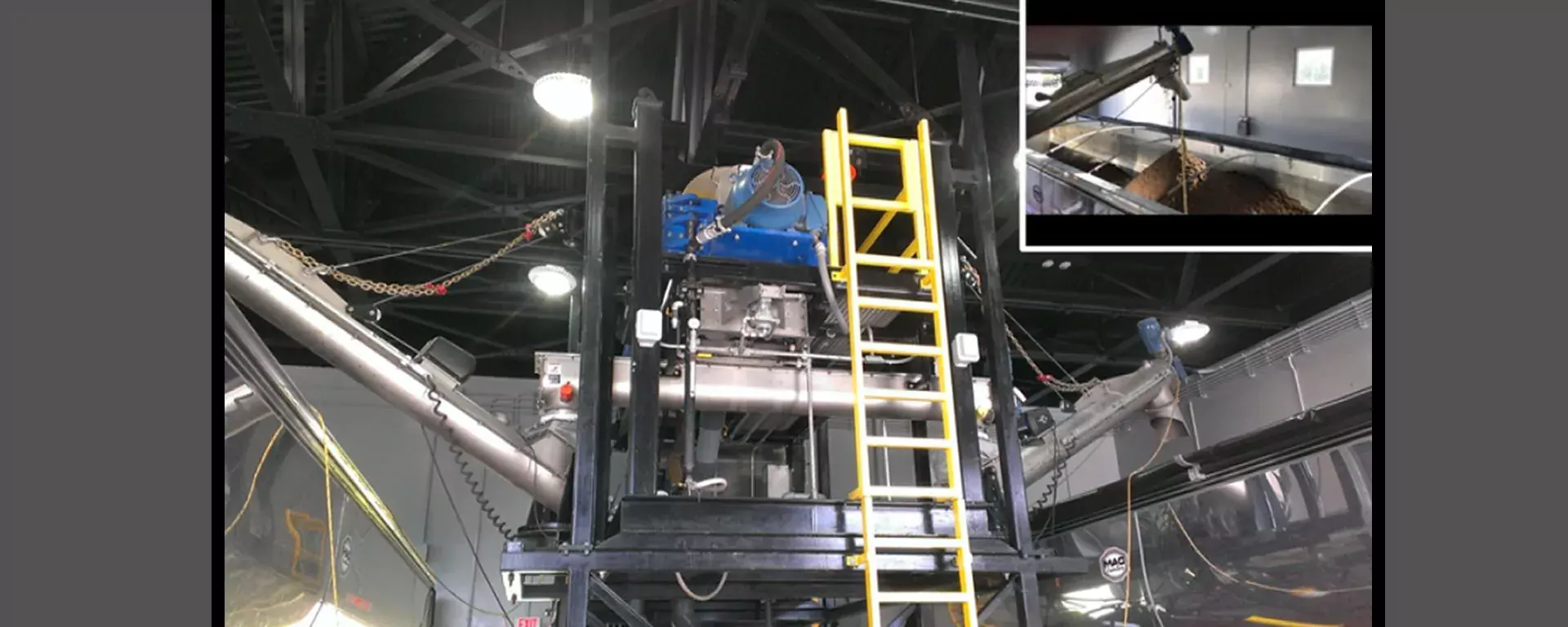- Introduction
- Background
- Regional and State Actions
- What is the Concern?
- What is Martin County Doing?
- What's Next?
Biosolids Introduction
Biosolids are the nutrient-rich by-product of wastewater treatment, generated by treatment of domestic sewage. They can be recovered and used beneficially as a source of water, energy, and nutrients. They can also be disposed of as waste in landfills or spread on land surfaces. About two-thirds of produced biosolids are used for fertilization by land application or composting, and the other third is disposed of in landfills.
Background
Sewage sludge is the solid, semisolid or liquid material produced during domestic waste treatment. Biosolids are the result of additional treatment of the sludge materials for land application that meet the state pathogen and metal reduction requirements. In Florida, there are three regulatory classes of biosolids allowed for land application. Those classes are: Class B (minimum quality), Class A (intermediate quality), and Class AA (high quality).
The classes refer to treatment level of the biosolids to reduce pathogens (Class B) or eliminate pathogens (Class A). Class A biosolids that meet state restrictions for certain metals are referred to Class AA. Further, Class AA biosolids are exempt from nutrient restrictions for land application based on the high level of treatment required for metals and pathogens.
Typical Class AA biosolids, however, still contain, generally the same concentrations of nitrogen and phosphorous as Classes A and B, making it a good fertilizer for agricultural productivity without the exposure risks for pathogens and metals.
Recent Regional And State Actions
In 2018, there were a number of actions taken at both the state and local level based on growing concerns about the impact of land applied biosolids on the environment. This was evidenced by another hard-hitting harmful algal bloom, likely exacerbated locally in the St. Lucie Estuary by excessive nutrients, especially nitrogen.
On June 8, 2018, a Regional Biosolids Symposium sponsored by the Treasure Coast Regional Planning Council (TCRPC) and the Indian River Lagoon National Estuaries Program was held in Stuart. The purpose of the event, which was attended by 170 participants, was to discuss how to better manage and reuse biosolids resources in a sustainable way that significantly reduces negative environmental impact. On the same day, FDEP announced that it was formulating a Biosolids Technical Advisory Committee (TAC) to evaluate current management practices and potential opportunities for improvements to protect water resources.
In mid-July, in response to a major algal bloom occurring in Blue Cypress Lake attributed to a nearby Class B site, Indian River County placed a moratorium on land application of Class B biosolids which is still in place. Days later, the TCRPC passed a resolution on July 20, 2018, naming state and local partnerships to raise awareness on biosolids management. This resolution prioritized reduction and eventual elimination of biosolids land application and established a pilot program to explore innovative uses of biosolids.
Following suit, on August 21, 2018, St Lucie County passed a resolution in support of TCRPC’s resolved actions. On the same day, Martin County unanimously passed a similar resolution supporting the TCRPC’s actions. Martin County, however, because of its unique location receiving nutrient rich runoff from agriculture and non-county sources, went further requesting the state to prioritize the reduction and eventual elimination of land application of biosolids; establish standard protocols and fund the identification, quarterly tracking and monitoring of non-residential biosolid applications; and to fund technologies to improve recovery and efficient use of biosolids.
In 2019, the Biosolids TAC delivered their recommendations, which included permitting based on site-specific application conditions, increased inspection frequencies, groundwater and surface water monitoring protocols, and nutrient management research to improve the management of biosolids and protect the state’s water resources and water quality. Additionally, the TAC promoted expediting the implementation of biosolids processing innovative technologies.
As a result, a Biosolids Management legislative bill (SB 1654 and HB 1267) was introduced in August 2019, and if passed in the 2020 legislative session, will require the initiation of rulemaking based on the TAC recommendations. In general, the 2019 proposed revisions to Chapter 62-640, F.A.C. are reflected in the current 2020 proposed legislative bill, however, neither extend applicability to Class AA biosolids that are marketed and distributed as fertilizer products. The proposed bill, however, did go further than rulemaking in supporting local government rules prohibiting land application of Class B biosolids prior to November 1, 2019.
What Is the Concern?
In Florida, especially in coastal areas and in and around the springs, there is concern that land applied biosolids containing excess nutrients and other contaminants seep or runoff into surface waters and contribute to the degradation of water quality. The concerns are heightened in areas that contain Outstanding Florida Springs, Outstanding Florida Waters, including the coastal St. Lucie River and Estuary.
It is acknowledged that steps are needed to enhance current biosolids management practices and to implement innovative biosolids technologies that provide enhanced resource recovery, beneficial use and sustainable management practices. Recognizing the TAC findings and that those technologies may not come quick enough to help restore our impaired waters, the state-initiated rulemaking for biosolids in 2019.
In the original rulemaking notice, the state acknowledged that the purposes of the rule changes were to, among other things, regulate land application of biosolids to ensure protection of the environment which would include “minimizing the migration of nutrients, nitrogen and phosphorous, that impair or contribute to the impairment of waterbodies.”
Because the impairment of waterbodies in Florida is directly tied to the loading of nutrients and nutrients are concentrated in land applied biosolids, the state understood that stricter rules for biosolid use need to be implemented. The proposed 2019 rules, however, focused solely on Classes A and B. There are no changes that would require stricter regulation of Class AA, even though the nutrient concentration is generally the same regardless of classification.
What Is Martin County Doing?
Letters & resolutions
- Martin County comments on Draft Amendments to Chapter 62-640, F.A.C. Biosoilds Rulemaking
- Martin County comments to FDEP on proposed revisions to Chapter 62-640, F.A.C. Biosolids Rulemaking
- Resolution No. 19-1.20
- Resolution No. 18-8.15
Current Practices
Martin County Utilities utilizes a centrifuge technique to thicken and dewater sewage sludge. The product is hauled to a composting facility that mixes the biosolids with vegetation which further treats the biosolids through heat to a Class A/AA standard during natural composting for approximately 45 days. The final product can be sold as a soil amendment.
If the biosolids fail to meet quality standards for any reason in the process, the batch becomes a Class B product and is hauled to a landfill. The end product becomes the property of the waste hauler who assumes responsibility for disposal. The disposal location is dependent upon the level of treatment received. It is noteworthy that there are no permitted land application sites in Martin County.
There are strict FDEP requirements for sampling and monitoring at the composting facilities to monitor biosolids quality and quantity, including inbound and outbound product volume and analysis of metals, nutrients and pathogens.
Tropical Farms sewage sludge centrifuge, a high speed, rapid rotation process to separate wastewater solids from liquid. The end result is approximately 18-20% solids material.
Strategic Goals
Martin County Utilities will continue to provide high quality Class A/AA biosolids product while exploring new wastewater treatment technologies to improve biosolids resource recovery and management options with the goal of reducing and eventually eliminating the land application of biosolids.
What's Next?What's Next?
The revisions to Chapter 62-640, F.A.C., became effective June 21, 2021. For more information related to the rule development for the revisions, please visit DEP Chapter 62-640, F.A.C. Rulemaking.
Effective July 1, 2022, biosolids land application site permits shall comply with two key provisions of section 403.0855, F.S., - the requirement for all biosolids land application sites to be enrolled in a Florida Department of Agriculture and Consumer Services Best Management Practices program and the prohibition on the land application of biosolids on soils with a seasonal high water table within 6 inches of the soil surface or depth of biosolids placement.


